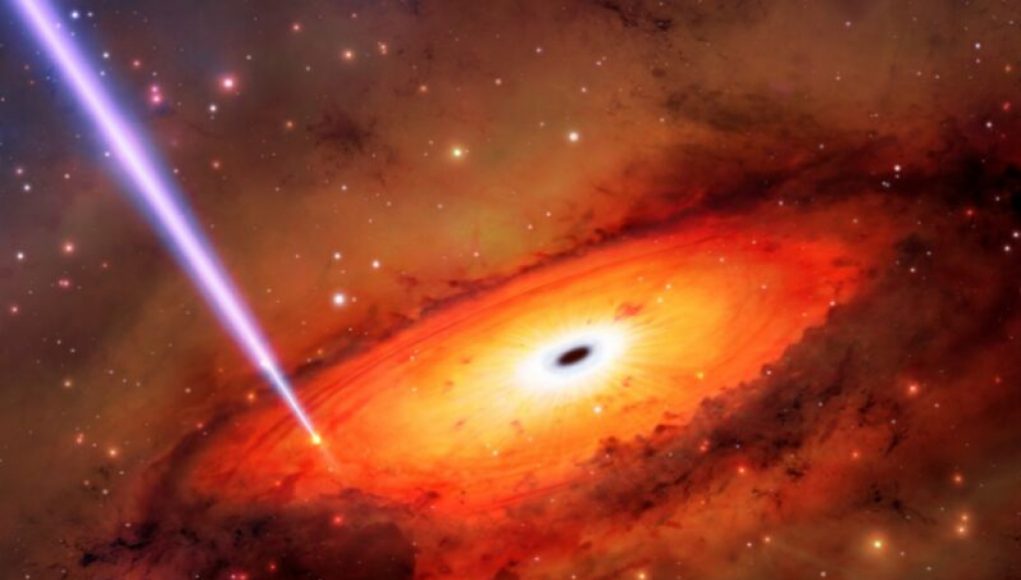Astronomers were left scratching their heads when they spotted a powerful gamma-ray burst (GRB) in October 2019. At first, they thought it was caused by a massive dying star exploding in a supernova. But subsequent observations revealed something even more fascinating: the burst was actually the result of a collision between stars (or their remnants) in a densely packed area near the supermassive black hole of an ancient galaxy. This rare event has been hypothesized before, but this is the first time it’s been observed.
Gamma-ray bursts are incredibly high-energy explosions in distant galaxies that can last anywhere from milliseconds to several hours. There are two types of gamma-ray bursts: long bursts and short bursts. Long bursts, which make up 70% of all gamma-ray bursts, are usually linked to galaxies with rapid star formation. Astronomers believe they’re caused by massive stars collapsing to form a neutron star or black hole, which then produces jets of highly energetic particles that emit X-rays and gamma rays. Short bursts, on the other hand, are thought to result from mergers between two neutron stars or a neutron star merging with a black hole.
The gamma-ray burst detected by NASA’s Neil Gehrels Swift Observatory in 2019 fell into the long category, but astronomers were puzzled because they found no evidence of a corresponding supernova. Further investigation revealed that the burst had originated with the collision of two stars or stellar remnants just 100 light-years away from the nucleus of an ancient galaxy. This is significant because it suggests a fourth way for stars to die: by colliding in densely packed areas of ancient galaxies. This occurrence is very rare in active galaxies, which aren’t as dense. An ancient galaxy could have a million stars packed into an area just a few light-years across, and the gravitational effects of being so near a supermassive black hole would have altered the motions of those stars so that they moved in random directions. A collision would be bound to happen eventually.
The authors of the study suggest that these kinds of collisions might not even be that rare; we just don’t detect the telltale GRBs and afterglows because of all the dust and gas obscuring our view of the centers of ancient galaxies. If astronomers could pick up a gravitational wave signature in conjunction with such a GRB in the future, that could tell them more about this kind of stellar death. “These new results show that stars can meet their demise in some of the densest regions of the Universe where they can be driven to collide,” said co-author Andrew Levan. “This is exciting for understanding how stars die and for answering other questions, such as what unexpected sources might create gravitational waves that we could detect on Earth.”
On June 5th, astronomers detected an unusual gamma-ray burst resulting from a collision between two stars in a distant galaxy. This incredibly rare event, dubbed by researchers as a ‘galactic demolition derby’, has only been observed once before in the galaxy NGC 4993.
The gamma-ray burst was observed by the Neil Gehrels Swift Observatory and marked the first time such an event had been captured in the Chandra X-ray Observatory’s field of view.
The two stars collided at an incredibly high speed of 400 km/s and created an enormous shock wave that vaporized the debris produced by the collision. This collision released a massive amount of energy which was then detected as a gamma-ray burst.
The collision occurred 7.9 billion light-years away and after the initial burst, the remnant remained detectable in future X-ray observations. Researchers found that the remnant was in the form of an unusually large and bright X-ray nebula that spanned the entire galaxy.
The discovery of this gamma-ray burst provides researchers with a better understanding of the formation and evolution of galaxies. By studying the properties of the remnant, it can help us to understand the physics behind stellar collisions and their aftermaths.
The researchers concluded that this unique event of two stars colliding could be responsible for some of the more powerful gamma-ray bursts observed in the universe.
This galactic demolition derby and its results are a reminder that the universe is full of fascinating and extraordinary events that can captivate our imaginations.




















